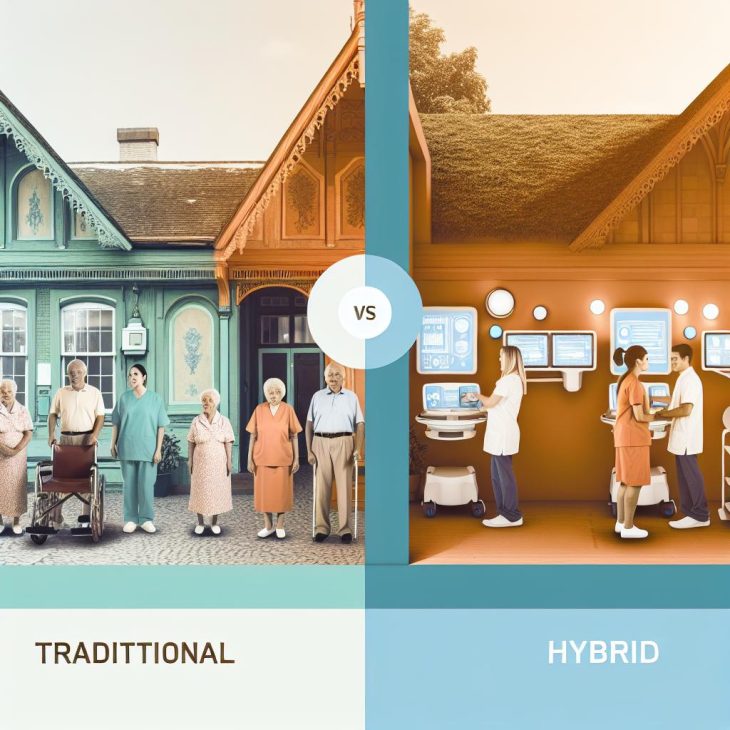
Understanding Long-Term Care Insurance
Long-term care insurance is an essential component for securing financial stability and peace of mind in the face of potential extended care needs. As the population ages, the demand for quality long-term care services is increasing. These services, however, can be expensive, and standard health insurance or Medicare often falls short in covering these costs. Long-term care insurance is designed to bridge this gap, ensuring that individuals and their families are protected from financial strain due to long-term care expenses.
Traditional Long-Term Care Insurance
Traditional long-term care insurance policies operate much like other conventional insurance types. The primary structure involves policyholders paying a set premium regularly, in exchange for benefits that kick in when long-term care becomes necessary. Understanding the intricate features of traditional long-term care insurance can aid in making informed decisions.
Cost Structure: A significant aspect of traditional long-term care insurance is its flexible payment structures. The premiums are usually aligned with the policyholder’s personal financial capability, making them more accessible to a wider audience. Generally, these plans present lower initial premiums compared to hybrid insurance plans, offering a viable entry point for those prioritizing budget management.
Benefits: Traditional policies are comprehensive in the scope of services covered. They typically extend to a variety of care environments, including home health care, assisted living facilities, and nursing home care. This broad coverage means that policyholders have access to essential services that allow them to maintain quality of life, regardless of where care is needed.
Inflation Protection: Another critical feature that comes with most traditional policies is the option to add inflation protection. This is particularly beneficial since healthcare costs tend to rise over time. Inflation protection ensures that the benefits increase at a rate that keeps up with the rising costs of care, protecting the policyholder’s investment and ensuring relevant coverage is available when required.
Use It or Lose It: A notable drawback of traditional long-term care insurance is its inherent “use it or lose it” nature. If a policyholder never requires long-term care, the paid premiums do not yield any financial return to either the policyholder or their heirs. This characteristic may deter some individuals from choosing traditional policies, especially those wishing to ensure some form of return on their investment.
Hybrid Long-Term Care Insurance
Hybrid long-term care insurance policies, while newer to the market, have quickly gained traction due to their innovative structure and dual-purpose nature. These policies integrate life insurance or an annuity with long-term care benefits, offering a multifaceted approach to financial planning.
Cost Structure: Hybrid policies typically require a more substantial financial commitment upfront, often in the form of a single lump-sum payment or a series of payments over a shorter duration. Although this might be more costly from the outset, the investment can be beneficial for those with the necessary financial resources, providing a comprehensive safeguard against future uncertainties.
Benefits: One of the standout features of hybrid policies is that they not only cover long-term care services but also provide a financial return through a death benefit if the long-term care benefits are not utilized. This aspect is appealing to many, offering peace of mind that the policyholder’s investment will yield financial assurance to their heirs.
Guaranteed Benefits: Since hybrid policies are typically associated with life insurance or an annuity, they inherently promise some return on invested premiums. Whether through long-term care coverage or a death benefit, there is a financial return, providing policyholders the assurance that their investment will benefit either themselves or their beneficiaries.
Flexibility: Flexibility in hybrid policies is another attractive feature. Policyholders often have the option to adjust the amounts of their coverage based on their evolving needs. This adaptability ensures that as life circumstances change, the insurance coverage can be aligned accordingly, offering continuous relevance and utility.
Which is Right for You?
Choosing the appropriate long-term care insurance policy is a nuanced decision that depends significantly on individual circumstances, including financial status, health, and personal long-term goals. Both types of insurance offer distinct advantages and considerations.
Budget Considerations: For individuals keen on maintaining a budget with fixed monthly costs, traditional long-term care policies may be advantageous due to their lower entry cost and manageable premium structures. Conversely, individuals with substantial available assets who are looking for a comprehensive return on investment may find the hybrid policies more fitting, despite their higher initial costs.
Risk Tolerance: People’s tolerance for risk and preferred assurance levels often guide their choices between traditional and hybrid policies. Individuals seeking certainty that there will be a material return, regardless of the eventual need for care, might gravitate towards hybrid plans, valuing the guaranteed returns. On the other hand, those who are more resigned to the “use it or lose it” condition of traditional insurance might find those plans suitable, especially if the premium affordability is a primary concern.
It is advisable for individuals to engage with financial advisors or insurance specialists to better understand these options and make informed choices tailored to their unique needs and circumstances. Such professionals can provide valuable insights and foster informed decision-making processes. Moreover, resources such as those provided by the National Association of Insurance Commissioners offer additional information and guidance for exploring these insurance options comprehensively, ensuring that potential policyholders have all the necessary tools to make the best choices for their future security.
This article was last updated on: June 10, 2025
